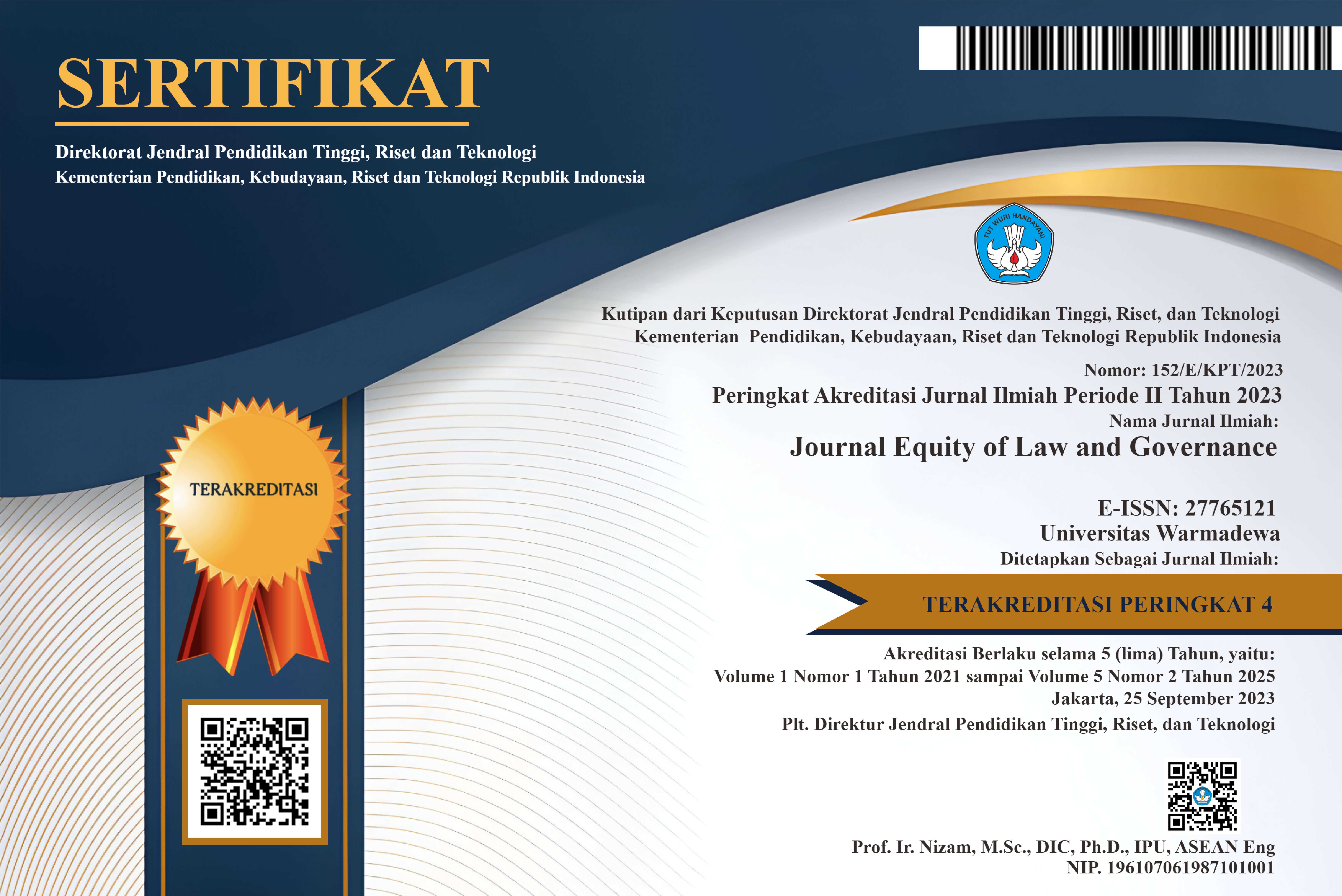Criminal Aggravation for Perpetrators of Sexual Violence Crimes
Abstract
The policy of aggravating perpetrators is to show the state's firm stance towards committing crimes of sexual violence. In reality, various punishments for sexual violence are not in line with the objectives of sexual punishment which regulate serious criminal sanctions for perpetrators of sexual violence. The perpetrator benefits from a decision that does not have a deterrent effect. The judge's consideration of imposing a sentence by taking into account the victim's role in the crime (precipitation victim) provides an opportunity for the judge to reduce the sentence of the perpetrator even though the concept of victim precipitation should be interpreted as a crime mitigation mechanism to minimize the risk of victimization. Therefore, this research aims to provide an overview of the criminal aggravation regulations, both those regulated in the Special Law on Sexual Violence and the new Criminal Code, as well as repositioning the meaning of victimization so that it does not become the basis for reducing criminal acts for perpetrators of sexual violence crimes. This research uses a socio-legal research approach with literature study techniques and in-depth interviews. The results of this research show that the concept of criminal enforcement regulated in Law No. 12/2022 concerning Crimes of Sexual Violence contains the threat of serious criminal and criminal aggravation, however this provision does not regulate the pattern of special minimum criminal threats (minima straf) while in Law No. 1 /2023 concerning the Criminal Code as a lex generalis regulates the concept of criminal punishment which can be considered as criminal aggravation, for example deelneming, concursus, and recidive
References
Daigle, L. E. (2021). Victimology The Essentials (THIRD EDIT). SAGE Publications.
Ding, Y., & Zhao, Q. (2021). Judicial examination and determination of victim wrongs in criminal trials in Mainland China: an explorative study. Crime, Law and Social Change, 76(1), 85–104.
Huda, C. (2011). Pola Pemberatan Pidana dalam Hukum Pidana Khusus. Jurnal Hukum Ius Quia Iustum, 18(4), 508–524.
Kurniawan, R. A., Felisiano, I., & Astutik. (2023). Penafsiran Victim Precipitation Untuk Pemidanaan Kekerasan Seksual. Jurnal Masalah-Masalah Hukum, 52(1), 86–96.
Nurisman, E. (2022). Risalah Tantangan Penegakan Hukum Tindak Pidana Kekerasan Seksual Pasca Lahirnya Undang-Undang Nomor 12 Tahun 2022. Jurnal Pembangunan Hukum Indonesia, 4(2), 170–196.
Perempuan, K. (2021). Perempuan Dalam Himpitan Pandemi: Lonjakan Kekerasan Seksual, Kekerasan Siber, Perkawinan Anak Dan Keterbatasan Penanganan Di Tengah Covid-19. CATAHU. https://komnasperempuan.go.id/catatan-tahunan-detail/catahu-2021-perempuan-dalam-himpitan-pandemi-lonjakan-kekerasan-seksual-kekerasan-siber-perkawinan-anak-dan-keterbatasan-penanganan-di-tengah-covid-19
Petherick, W. (2017). Victim precipitation: why we need to expand upon the theory. Forensic Research & Criminology International Journal, 5(2), 262–264.
Qamar, N., Aswari, A., Djanggih, A., Syarif, M., Busthami, D., Hidjaz, K., & Rezah, F. S. (2017). Metode Penelitian Hukum. CV. Social Politic Genius (SIGn).
Wibowo, A. (2017). Kebijakan Pemberatan Pemidanaan pada Pelaku Kekerasan Seksual terhadap Anak dalam Perspektif Tujuan Pemidanaan. Jurnal Yuridis, 4(1), 1–14.
 Abstract viewed = 49 times
Abstract viewed = 49 times
 PDF downloaded = 49 times
PDF downloaded = 49 times













